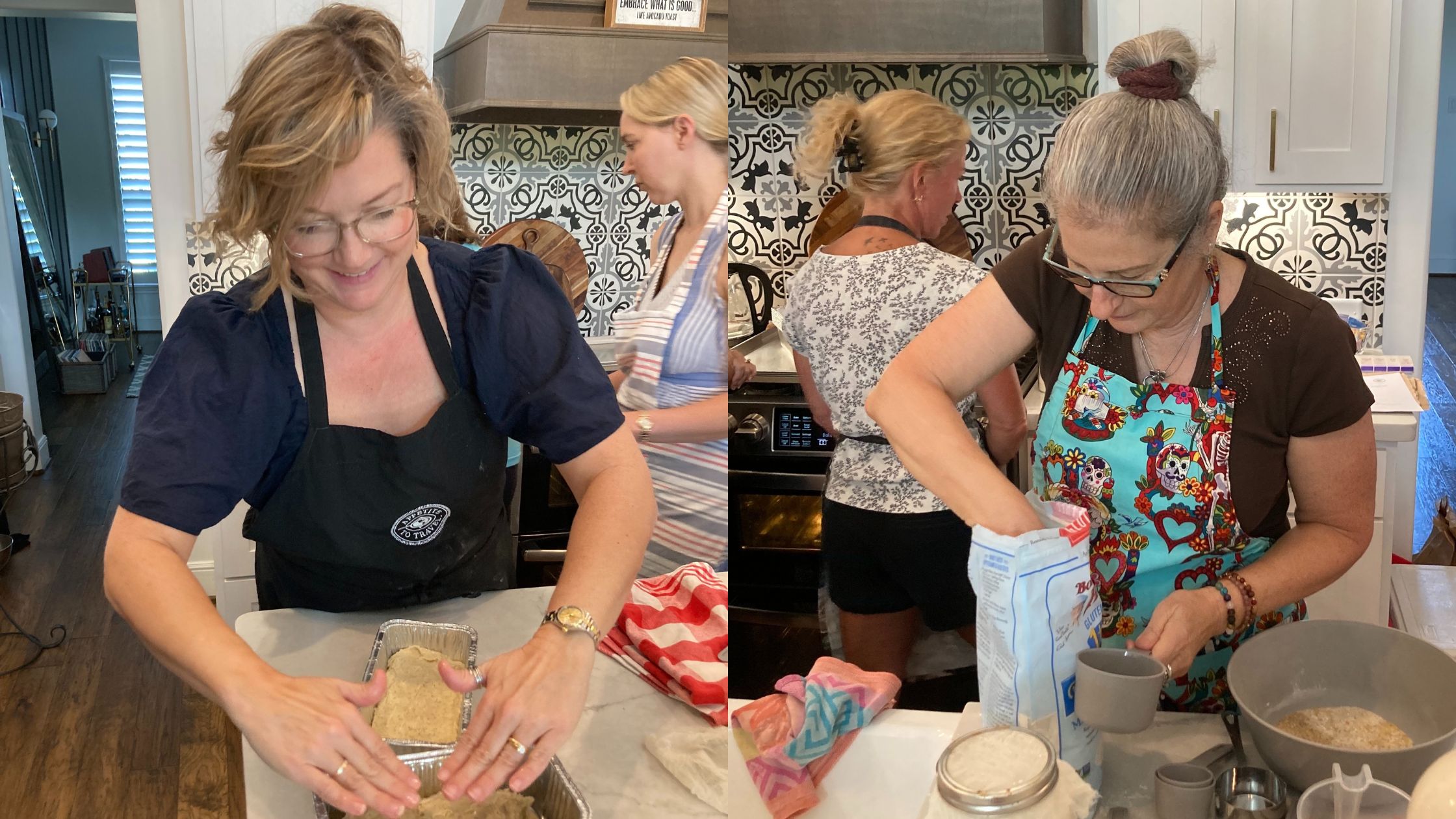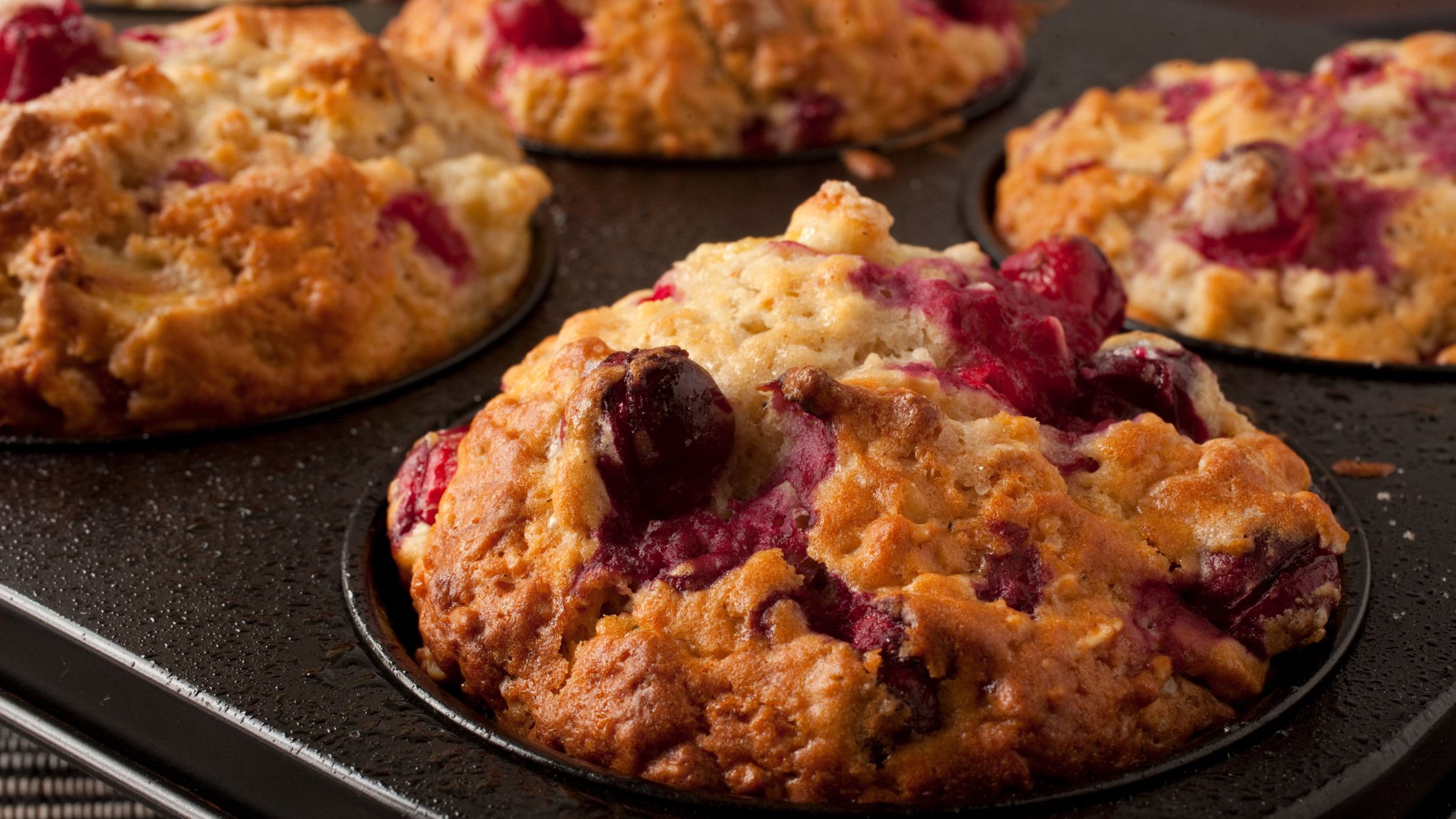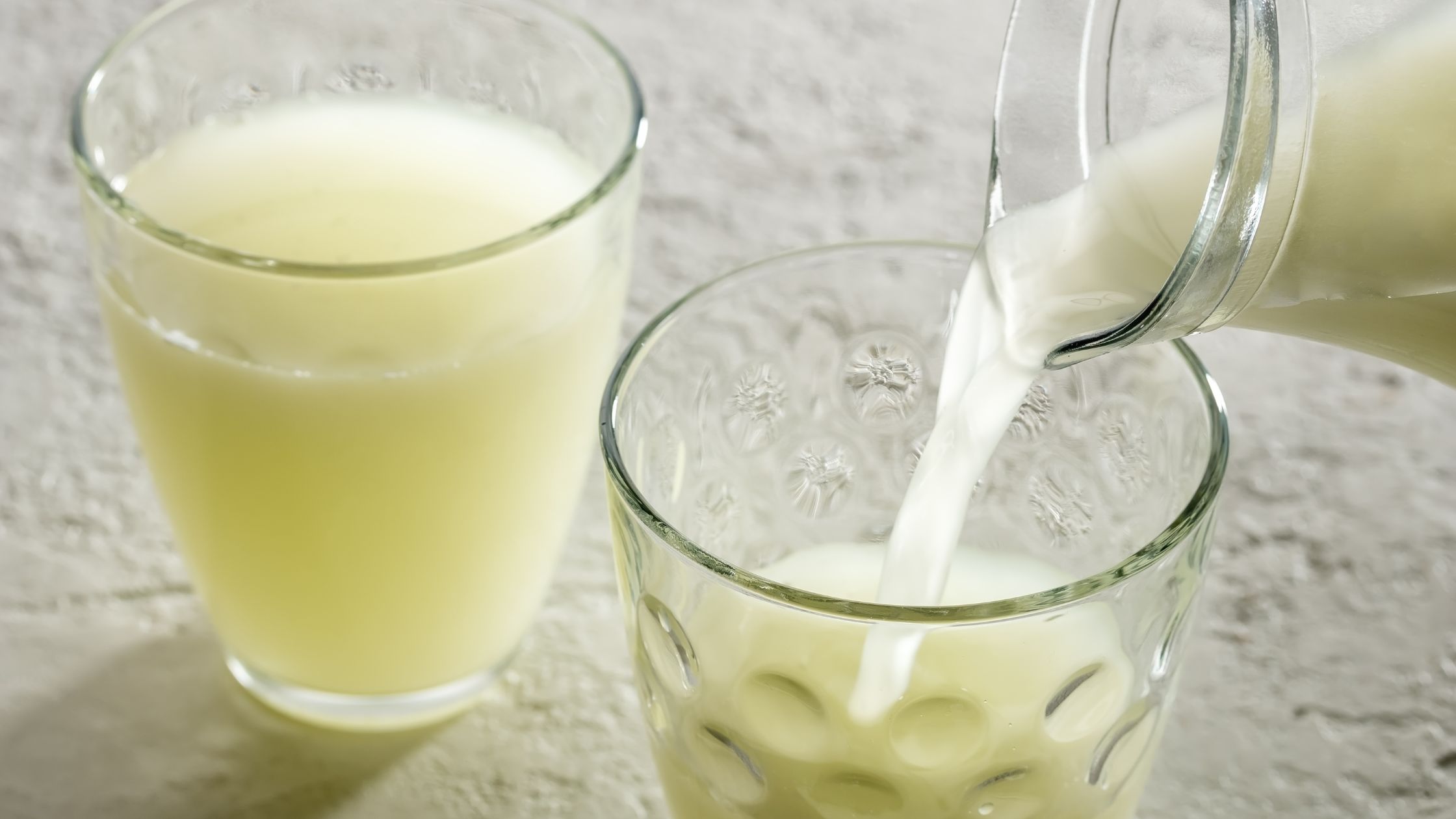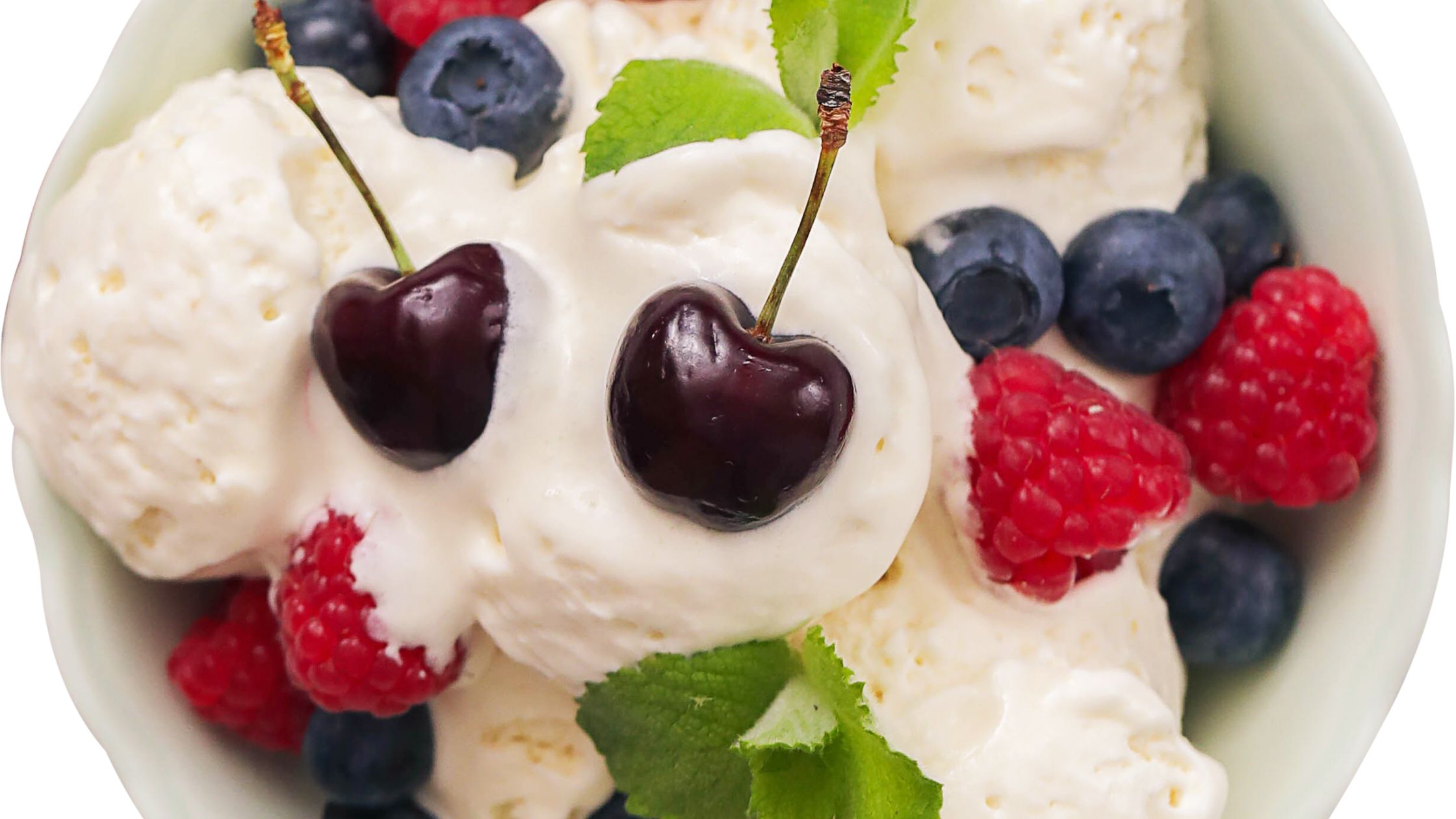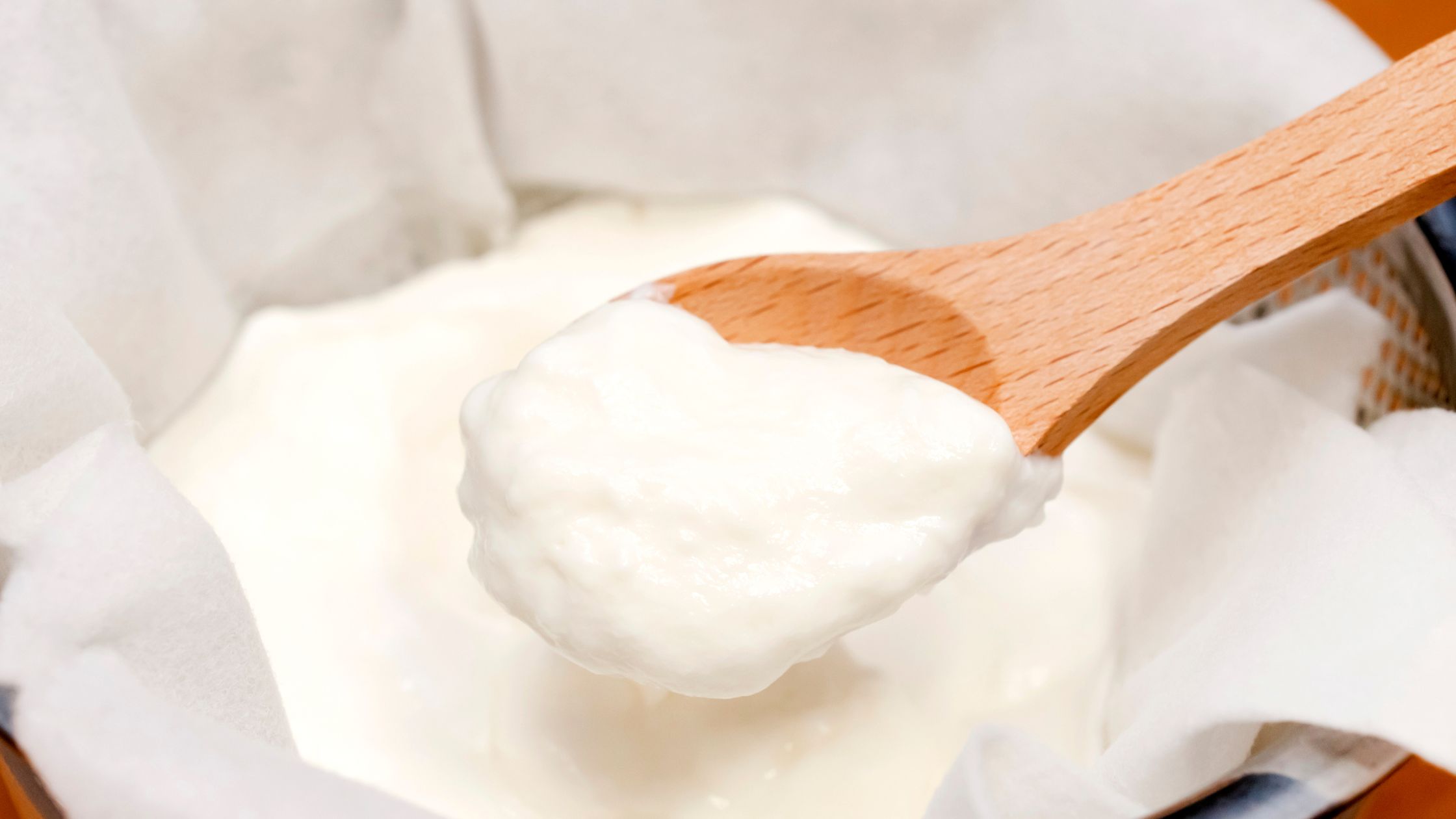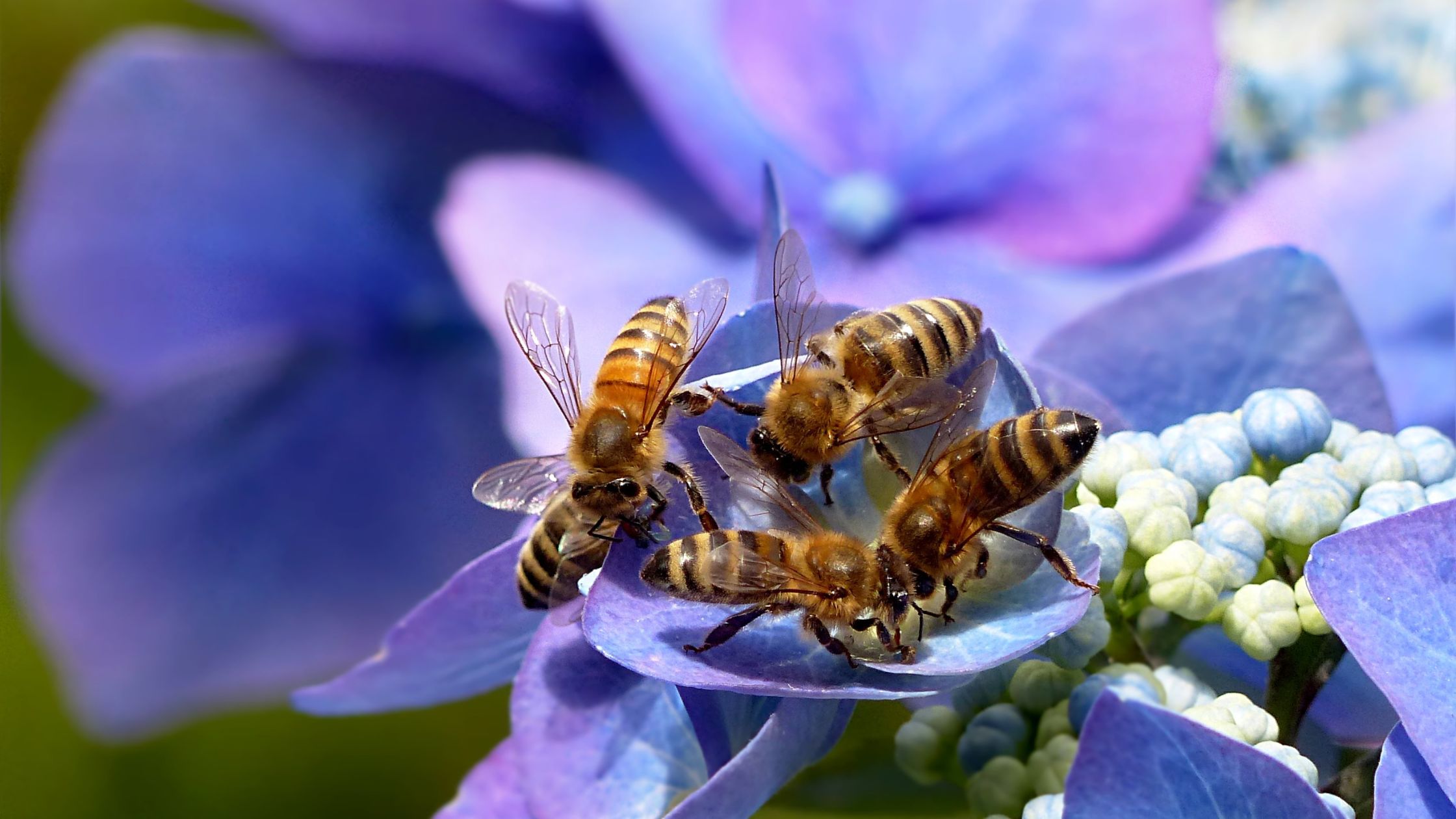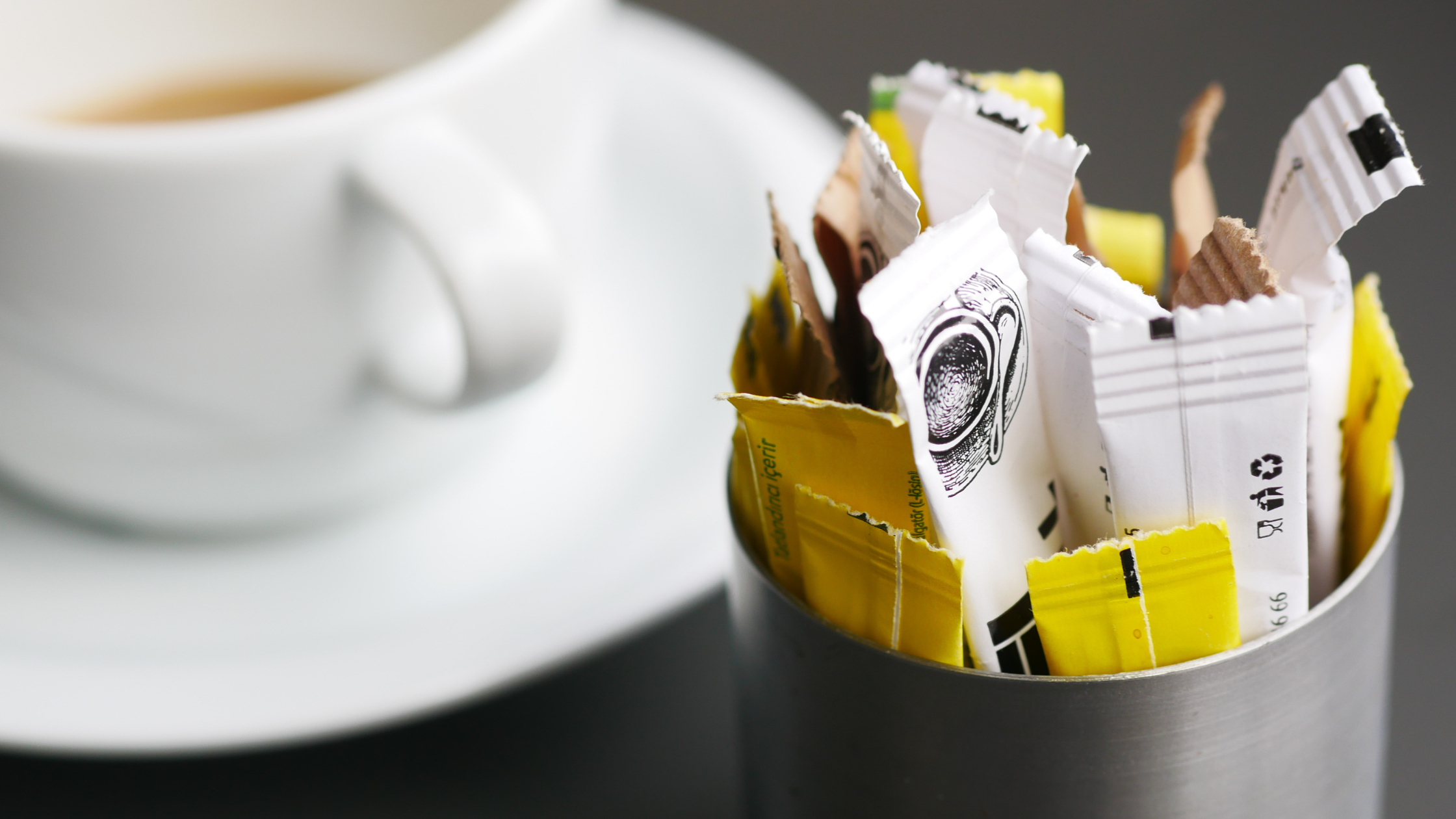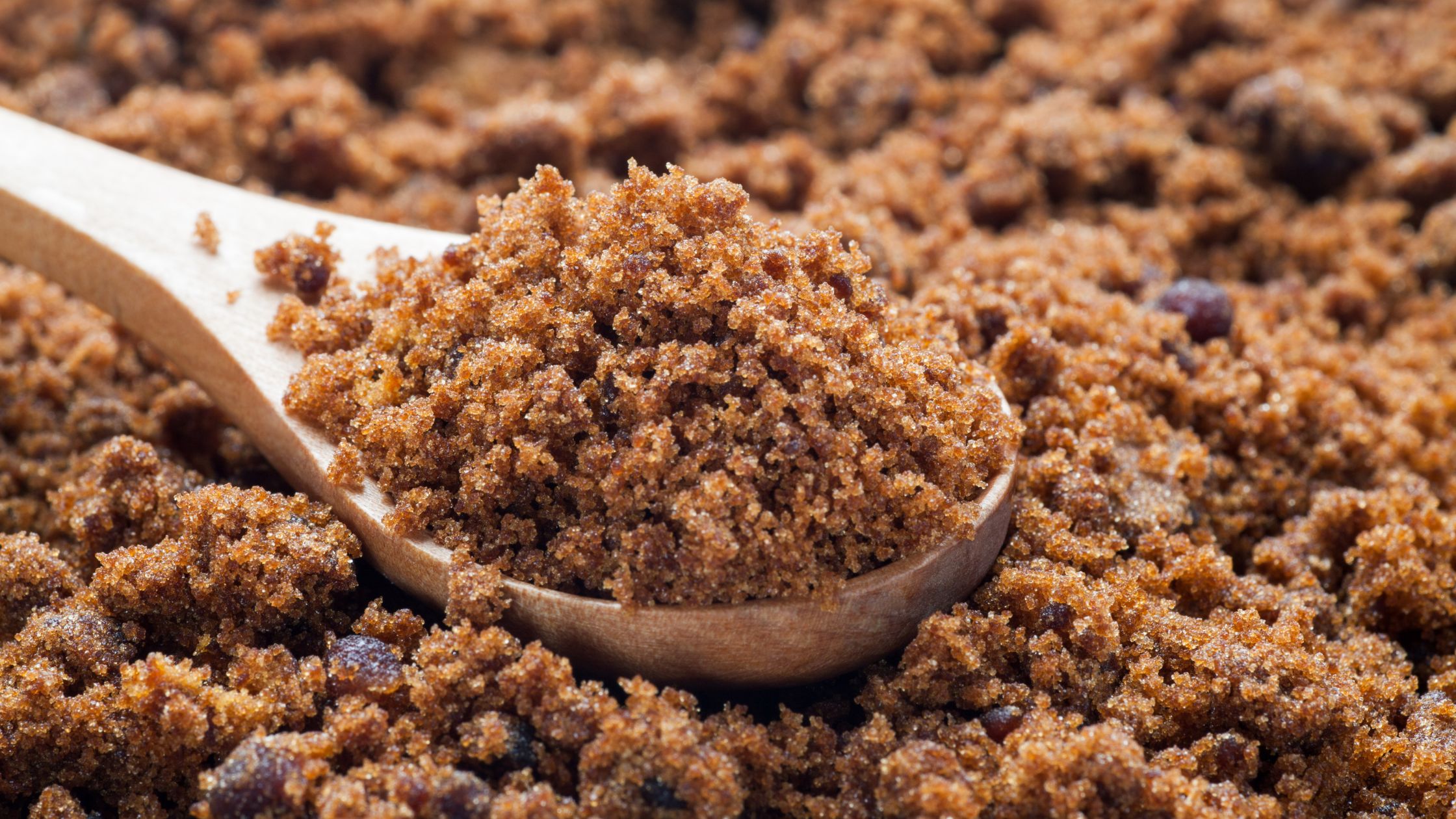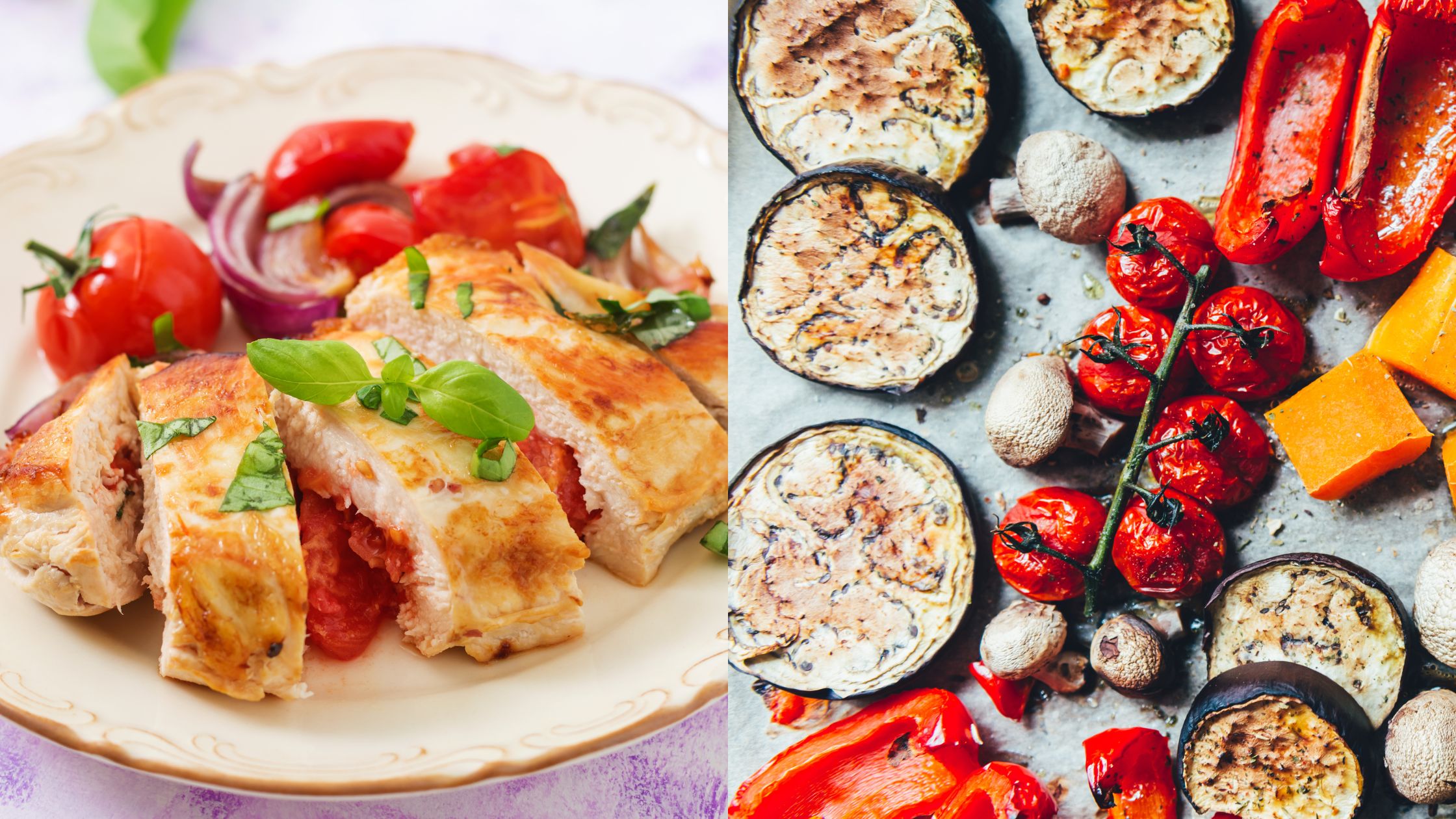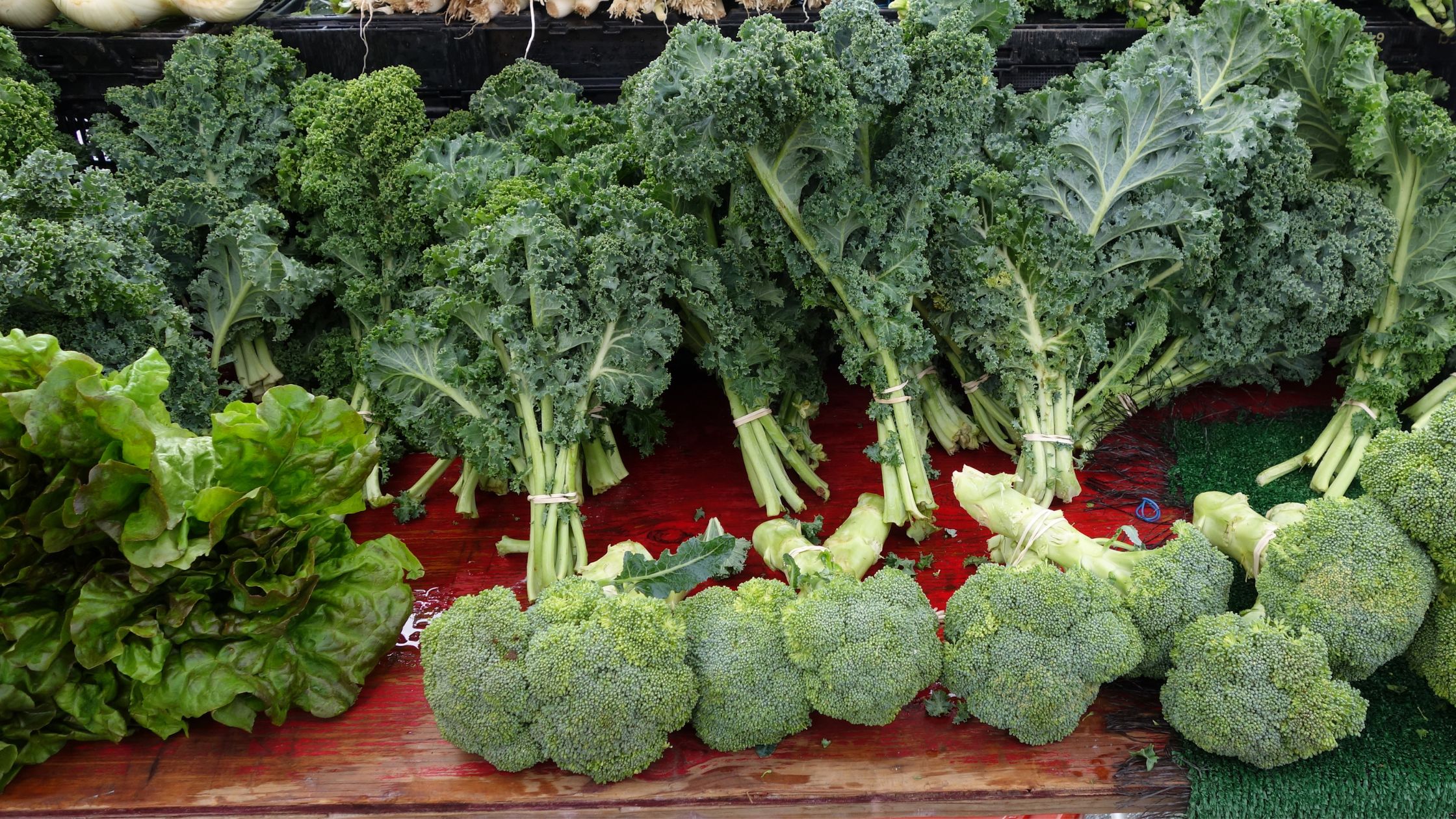Recently I was invited to take part in a gluten free sourdough baking class. Taught by Kasey Lobb, a registered dietician nutritionist, the class promised to teach us how to make a delicious gluten free sandwich loaf from scratch. We would also go home with a starter of our very own in order to replicate the process in our own kitchens.
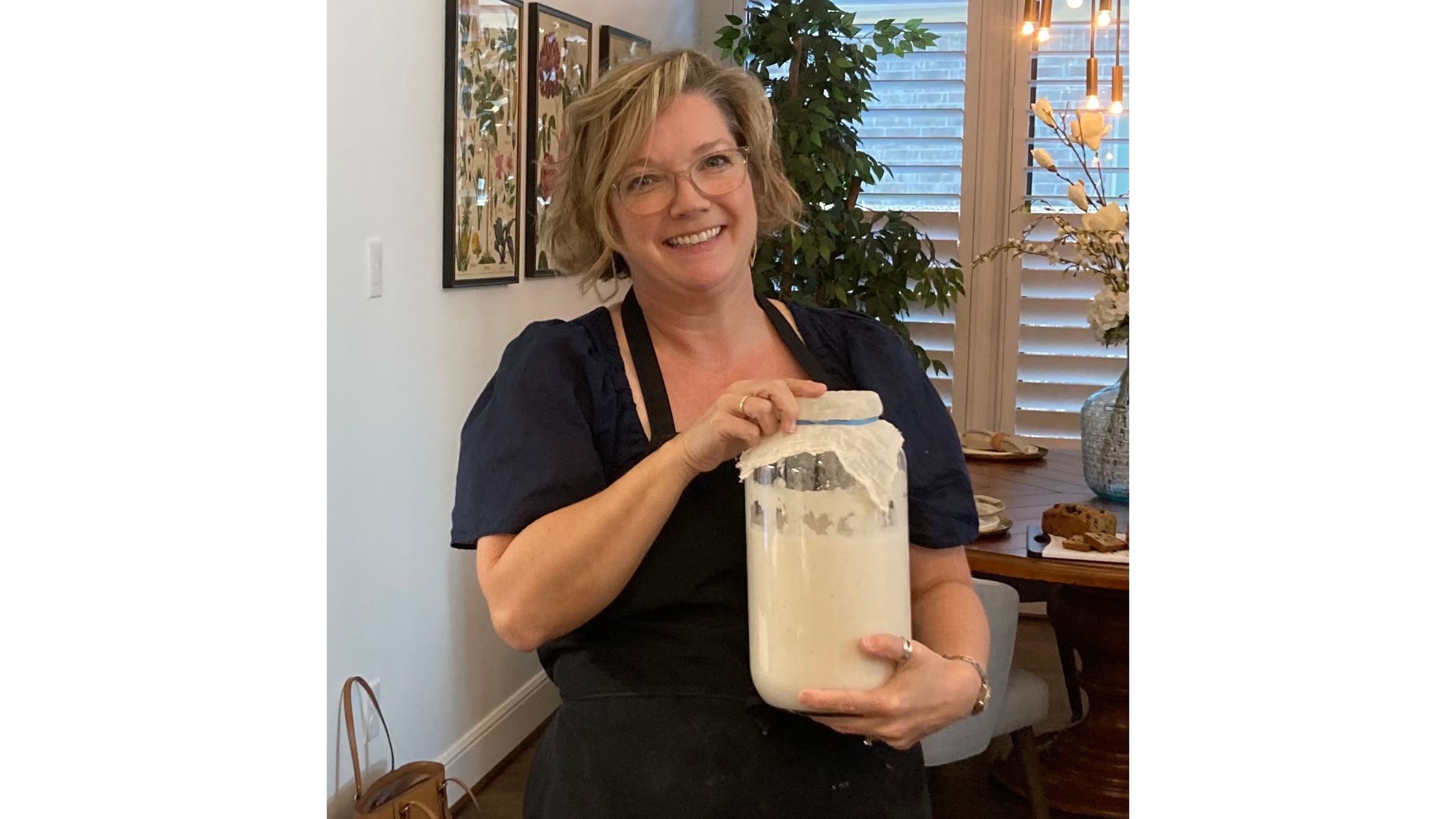
I confess I love cooking classes. It’s super fun to teach them and I certainly enjoy doing that, but it’s also great when you have a chance to take a class and learn from someone else. Kasey was a wonderful instructor.
The class was held at a friend’s house and there were 10 of us, each paired up so we could share one of the Kitchen Aid mixers. Taking us through the process of what we were doing and a breakdown of the ingredients, Kasey, did a great job of explaining everything.
We started with the liquid ingredients, which included some starter from an impressively large jar. She’d been feeding it for days in order to have enough for the class. It was bubbly and fragrant in that fabulous way that starter is supposed to be. 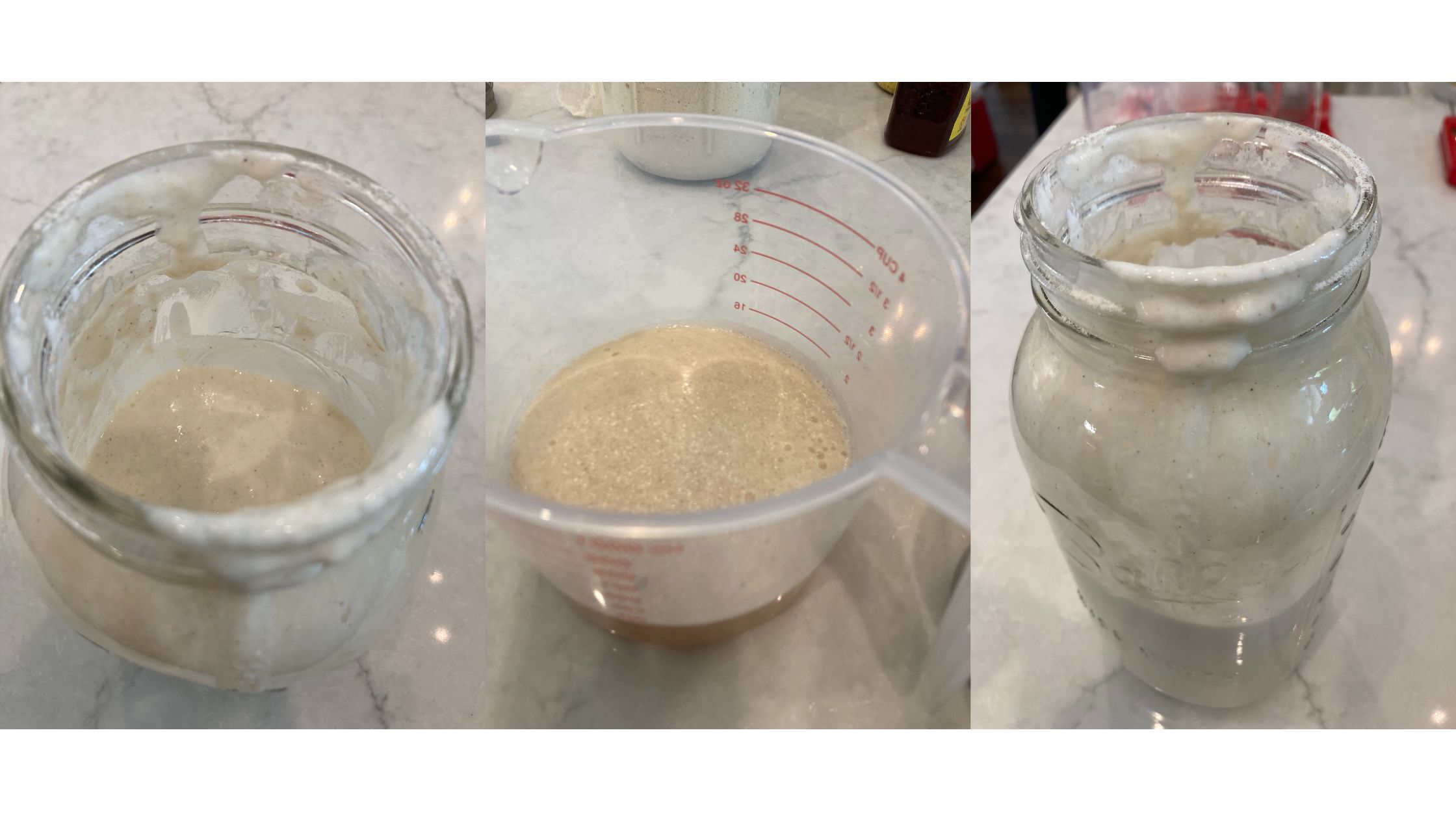
One of the things that I appreciated about the class is how Kasey apparently has a similar mindset when it comes to food labels. She carefully explained each ingredient, why she’d chosen the ones she did, and how everything worked together to support the dough. In addition to the gluten free sourdough base we used egg, sugar, yeast, water, GF baking blend, nutritional yeast, ground flax seeds, and psyllium husk fiber.
After mixing the liquid ingredients we mixed together the dry ingredients and then put them both together. At each step of the process Kasey would demonstrate what we were supposed to be doing and then come around offering assistance if people needed it. She wanted us to not only hear, but also see and understand why it the batter needed to look and feel the way it did.
Eventually we had our beautiful loaves tucked into their loaf pans and from there into the oven. At which point we were able to enjoy a snack that Kasey had prepared of the sandwich loaf we were making that she jazzed up with soaked fruit and seeds. It was mouthwateringly delicious. This bread was so fabulous…how fabulous was it?... everyone wound up going back for a second slice. Nicely dense with a good level of hydration it wasn’t dry like most commercial gluten free breads. Best of all it didn’t have excessive plant gums. It’s one of those breads that doesn’t need anything else, it’s amazing all by itself. 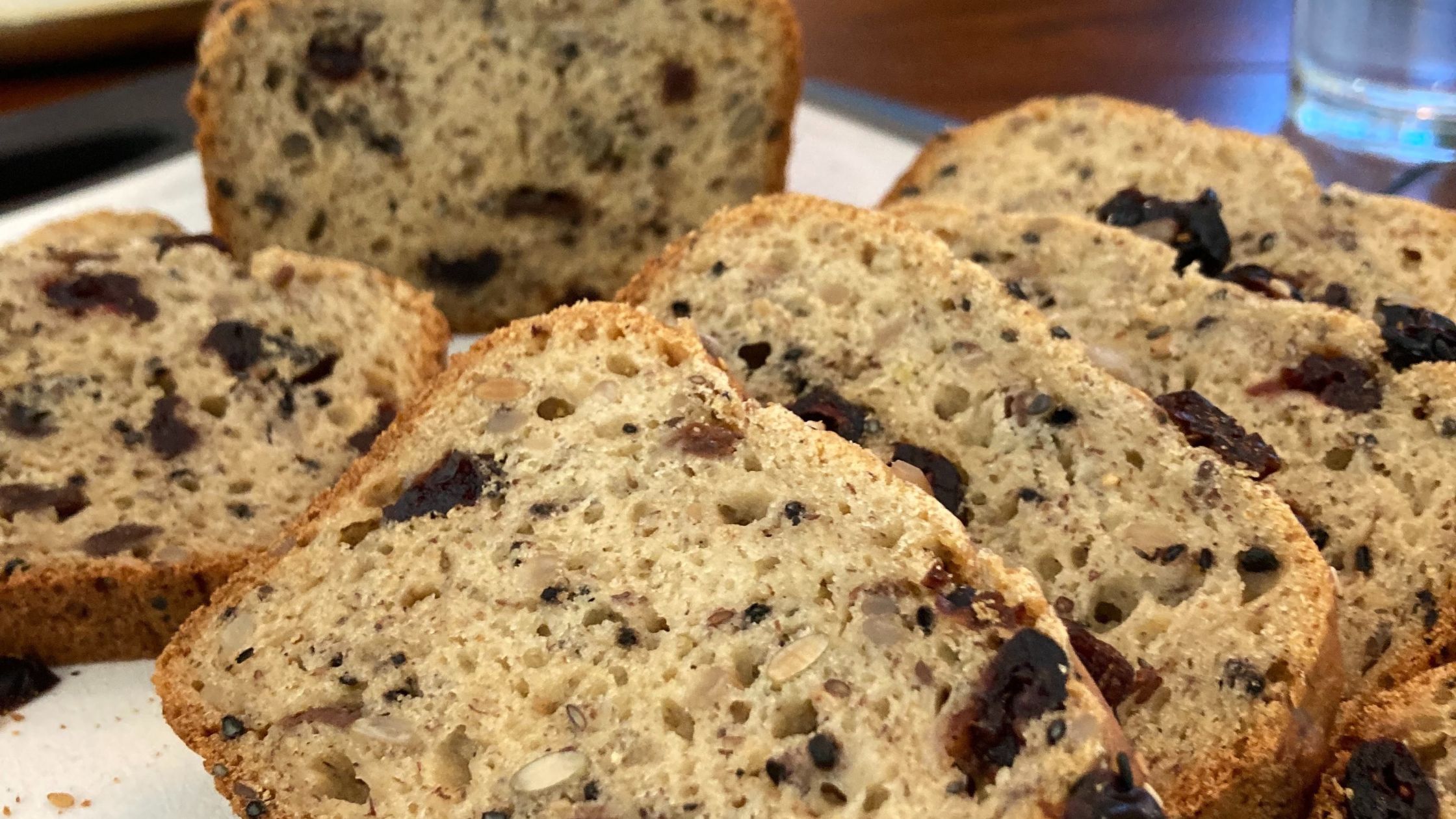
Luckily we were all given the recipe, plus a couple of others to take home with us.
That evening I carefully fed my starter and set it up to make sourdough pancakes for breakfast the next day. My starter is obviously a new one so it’s not super bubbly, however the pancakes were delicious with a hint of sourdough tang.
Now it’s been fed, put to bed, and is waiting for the next baking adventure.
One of the best things about this class for me was learning about a new kind of baking pan that is much better for batter style breads than regular baking pans. It gives the loaf more form so that it can rise higher and will be better for sandwiches.
Here’s the supply list:
- 2.2 pound Pullman Loaf Pan - Made with carbon steel it’s silicon lined with no PFOAs or PFASs, has a vent at the bottom (you use parchment paper when making batter breads), and a lid in case you want perfectly square bread
- Konsyl Psyllium Husk Powder - This helps keep things together since there is no gluten in this mix, it also provides fiber and density for the bread
- Nutritional Yeast - Provides a little bit of B12 and also adds delicious flavor to the bread
- Bob’s Red Mill 1 to 1 Gluten Free Baking Flour - This is Kasey’s recommended blend
- Active Dry Yeast - Slightly different than instant yeast although I believe both would work for making this kind of bread
- Gluten Free Sourdough Starter - If you don’t have the opportunity to take a gluten free sourdough baking class or you don’t have a friend who has starter to share, the good news is you can get your own and start from scratch
It was a wonderful class and I’m delighted that I had the opportunity to spend time learning how to do this. If you’d like to take a class with Kasey be sure to check out her website Appetite To Travel.
If you have the chance to take cooking classes I encourage you to do it. You’ll learn something new, have fun doing it, and gain a new skill that you can add to your kitchen repertoire.

